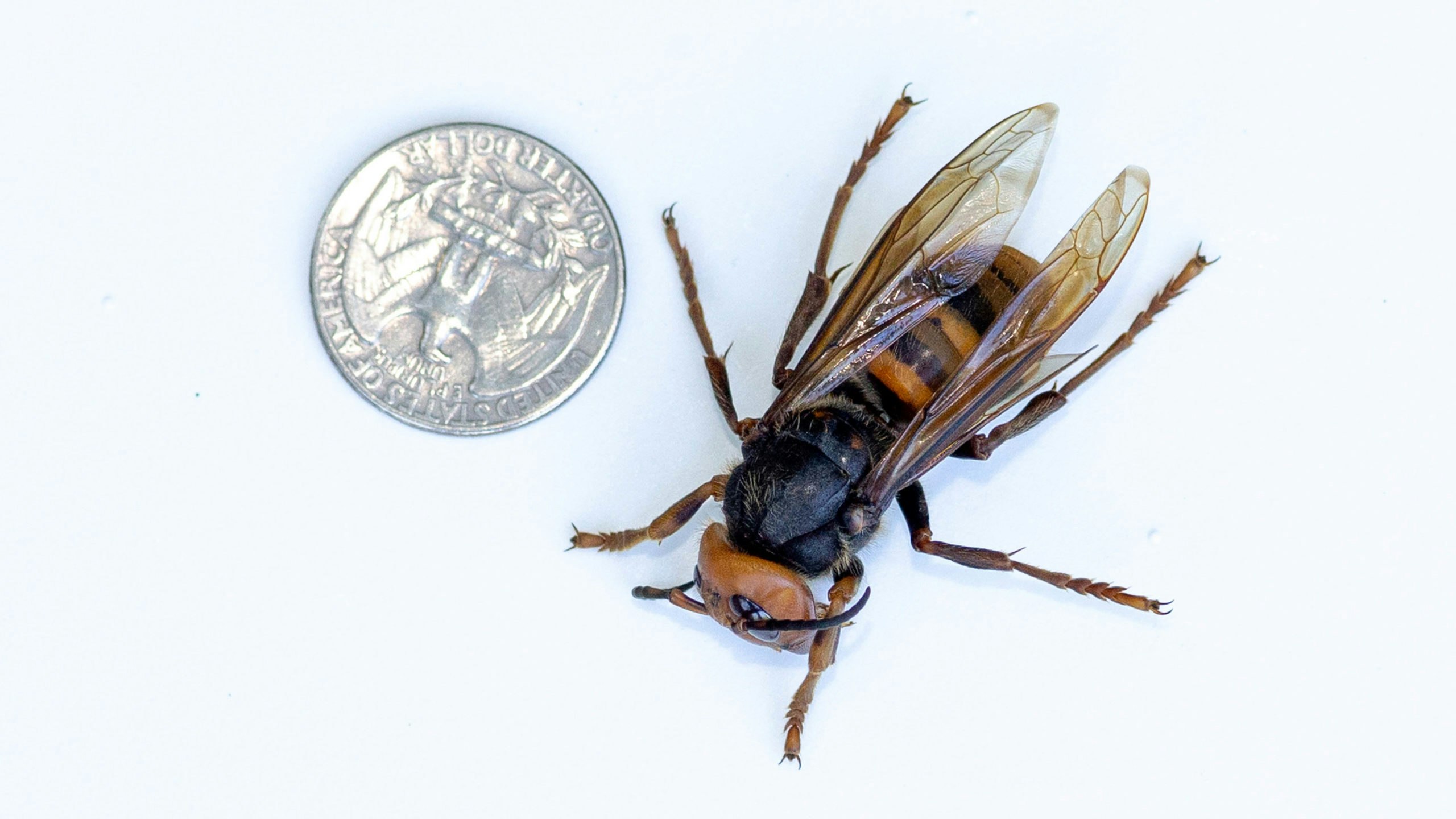By Wendy Corr, Cowboy State Daily
Back at the beginning of the pandemic, a dark-humor meme started going around, which Facebook users termed “Apocalypse Bingo.”
“Flesh Eating Robots,” “Tiger King Craze,” “Toilet Paper Hoarders,” and “Massive Saharan Dust Cloud” were all real-life extreme events that appeared on some of those hypothetical Bingo cards – as well as another title that sounds like something from a bad B-grade horror film: “Murder Hornets.”
But where have those terrifying insects gone, since their disturbing appearance in popular culture two and a half years ago? And do they pose any threat to insects – and humans – in the Cowboy State?
Asian Giant Hornets
In early 2020, Asian Giant Hornets were making a name for themselves, attacking hives of honeybees in the Pacific Northwest. Just last month, the species (which are officially labeled Vespa mandarinia) was given a new name by the Entomological Society of America – the northern giant hornet.
The “giant” label is well-deserved. The queens can grow up to 2 inches long.
And the unofficial designation of “murder” hornets is also accurate. The insects target other bee colonies. They use mandibles shaped like spiked shark fins to decapitate their smaller prey, then feed the dead bees’ bodies to the young hornets.
However, unless provoked, scientists say the hornets rarely attack humans. Each year 30-50 people die from northern giant hornet stings in the insects’ native Japan; the U.S. Centers for Disease Control and Prevention reports that hornets, wasps and bees kill an average of 62 people per year in this country.
But the stinger of a murder hornet can puncture a beekeeping suit – and human victims have likened the sting to “red-hot thumbtacks” puncturing their skin.
Since the insects were first spotted on the west coast in 2019, scientists and beekeepers have been trying to eradicate the invasive species, primarily because of the threat to native honeybees. So far, they’ve been successful in keeping the numbers under control, destroying several hives within a year after they were discovered in North America.
Wyoming’s Climate Not Hospitable
But the chances of the aggressive insects relocating to Wyoming are small, according to Scott Schell, an entomologist at the University of Wyoming.
“The extremes of our climate, heat and dryness in the summer and the extreme cold of the winter, they’re just not adapted to it,” said Schell. “They come from maritime habitats like Taiwan and Japan, and of course they were able to successfully live in the Pacific Northwest next to coasts. I don’t think the habitat of the dry interior of those states is suitable for them.”
Watch Out For Wyoming’s Dangerous Insects
Schell warns, though, that there are insects in Wyoming that can cause harm to humans.
“The European paper wasp seems to have spread to most towns in Wyoming,” Schell said. “It seems pretty well adapted to living in towns, I haven’t found many out in wild areas.”
Paper wasps will deliver a painful sting if they are disturbed, or their nests are threatened, and cause allergic reactions, just as other insect stings do.
“But they’re no worse, and are probably actually less aggressive than, say, our western yellowjackets,” Schell said.
Ticks, which are found in wooded and grassy areas, can carry diseases such as tularemia, Rocky Mountain Spotted Fever and Colorado Tick Fever.
And mosquitoes carry the threat of West Nile Virus, which can develop into West Nile neuroinvasive disease with symptoms such as severe headache, fever, neck stiffness, stupor, disorientation, coma, tremors, convulsions and paralysis.
But just in case, keep an eye out for murder hornets.





